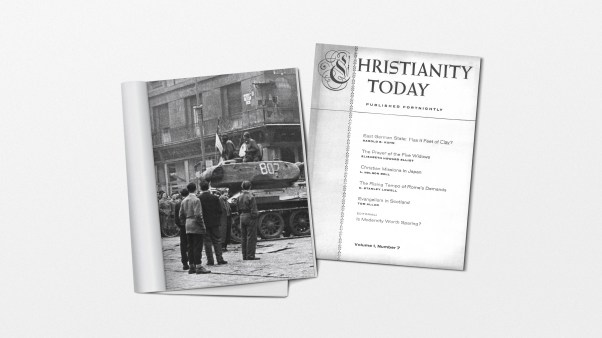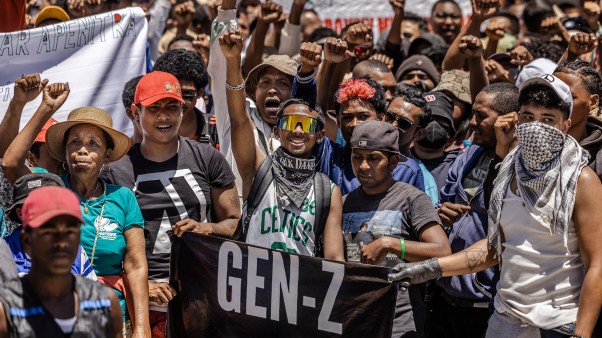The ministry of the early Church mirrored the mission of Jesus. The apostles were called and trained by him as he carried on his own ministry. Later on deacons were called by the Spirit and ordained by the apostles. Presbyters or elders were likewise called and ordained to serve in churches, the senior elder consecrated at first by the apostles to serve as the bishop or presiding elder of the congregation. Besides this, there were in the early Church prophets, teachers, healers, and unordained ministers called by God to his service.
While it is difficult to establish the earliest principles of Christian mission, it seems clear that the original outreach was to the Jews. Even in our Lord’s time this was extended to the Samaritans and others outside the Jewish community. Then through St. Paul and his co-laborers the Christian mission was broadened to include the Gentiles, and finally the whole world.
From earliest times the followers of “the Way” understood that baptism into Christ’s body meant participation in the mission of that body. All who became part of the body were expected to become workers by taking up some aspect of the ministry of our Lord.
It seems clear that there were few, if any, professional clergymen in the early years of the Church’s life. St. Paul himself was self-employed. As he said in his address to the Ephesian elders, “I have coveted no man’s silver, or gold, or apparel. Yea, ye yourselves know, that these hands have ministered unto my necessities, and to them that were with me. I have showed you all things, how that so laboring ye ought to support the weak, and to remember the words of the Lord Jesus … It is more blessed to give than to receive” (Acts 20:33–35).
It is difficult to establish clearly the social and economic characteristics of the group that formed the fellowship in these early years. But undoubtedly a great many of them were poor and from the working classes. On the other hand, Scripture and early church history tell us that converts to the “fellowship of the Way” and the “good news” of the Gospel came also from the educated classes and from those of high political and economic status. As the centuries passed, more such converts were made. The good news met personal and collective needs in an empire affected by the changes in the power structure of the Roman government and no longer secure in its old gods and religious observances. The old order was passing, and the Christian Church was gaining in temporal power.
Service Of The Self-Employed
In the early Church, preparing the members of the fellowship for mission seems to have been done largely through in-training methods. Both ordained and unordained ministries reflected the presence of many self-employed persons rather than professionals, as we know them today—a fact sometimes overlooked because communal living was an ingredient of the early fellowship at Jerusalem. Indeed, the rapid spread of the Gospel throughout the Roman empire, in spite of periods of persecution and other difficulties, shows that leadership composed of baptized members committed to the principles of Christ and his mission must have been largely self-employed. And in one way or another this pattern persisted for centuries.
It is interesting that one of the keys to the rapid growth of present-day cults and newer churches is that many of their ministers are self-employed. This is true, for example, of the Shepherd Movement in West Africa and the Congo, of Revival or Revival Zion in Jamaica and Trinidad, and of Pentecostal and Holiness churches. These and similar groups have a very small proportion of “professional” ministers; most are self-employed.
The followers of the way that came to be known as the Catholic Church, though initially resistant to their cultural milieu, were more and more affected by the cultures and sub-cultures of their time. New converts brought into the Christian family many values, beliefs, and concepts from pagan religion and other aspects of pagan culture; in fact, a process of syncretism introduced many principles quite different from our Lord’s own teachings and the experience and teaching of the early Church.
Many of the pagan religious structures centered around priests and priestesses who were often professional in the sense that they withdrew from the general work and life of the community, and Christian converts from paganism early affected the characteristics of the Christian ministry. In time the ministry became largely professional. The ministers of Christ were increasingly removed from the total stream of productive society, until all the working members of a church were in some kind of religious order. The process continued, and within the professional ministries of the Catholic Church there came to be a division between holy and more holy professionals, the holiest being known as the “religious.” The purest form of the “religious” were men and women in orders that required a contemplative life, completely withdrawn from society.
On the other hand, because of the increasing popularity of the Roman church and because of a similar trend in the Orthodox church toward professional ministries, the clergy became powerful political figures. For a long period in the Western world, church leaders dominated the political and economic structures of society. Popes, cardinals, and other clergy dictated to the sociological, educational, and scientific life of the times. The Church was in the world, and this made the Church extremely worldly. And the Church and its sense of mission were far removed from Jesus and the apostles and the group known as the “followers of the Way” in the first few centuries after the Crucifixion and the Resurrection.
From Love To Destruction
For the average baptized person, mission meant merely adhering to the rules and regulations of the ecclesiastical institution. Missionaries were professionals bringing with them what they believed to be Christian rules and the corporate life of the Church. At the same time, these missionaries were serving to promulgate the materialistic aspects of their cultures to such an extent that the total missionary movement seemed to be aimed at the actual destruction of other cultures. The love and other spiritual dynamics of the “followers of the Way” were changed by the dogma and institutional methods of the Church. Most of what had appealed to the people about Christ and his mission was muted. The Church was placed at the service of powerful economic and political leaders developing a colonial policy in an attempt to dominate the whole world.
The Reformation brought a new theological dimension through its recovery of the basic doctrine of justification by faith. Yet it did not essentially change the process by which Western culture was affecting the other cultures of the world.
Because the Church, as the body of Christ, no matter how segmented, is made up of individual human beings, and because the Bible and the sacraments contain within them the spiritual power of God, no age was without persons whose lives reflected Christ. Some of them, like Savonarola, were put to death for their efforts.
History makes clear that though men can be kept in bondage by the power of political, ecclesiastical, and cultural structures and institutions, the Spirit of God and his love, exhibited in the incarnation and the life, death, and resurrection of Jesus, can always break through and set men free.
One of the problems of our time, then, is how to recover in our Christian mission the power of the Word made flesh. If we cannot do this, the institutions now established as parts of the Christian Church will ultimately be destroyed in many parts of the world, either as useless and innocuous or as enemies of the people. If this happens, the body of Christ will doubtless become visible in quite new forms from anything we now know. Christ died and rose again, defying the natural order. He is the Alpha and Omega. He was at the beginning and will be at the end. The creative forces of God cannot be stopped. God speaks to all men. All men are made in his image and likeness. All men, therefore, can hear his Word and be redeemed, can be converted, and can become part of Christ’s body. If salvation could have come by law, there would have been no need for God to send his Son into the world. There would have been no need for his ministry and life among us, no need for his crucifixion and resurrection.
Consider now some practical questions. What kind of person chooses the ministry today and why? What kind of ministry is he trained for? How does present seminary education equip men for their task? Underlying all such questions there must be a clearer understanding of what the Church is or should be, who its ministers are, and how many types of ministries there should be. There must be consideration of the role of the professional minister and of whether or not this professional can change his role to that of a self-employed minister—and vice versa. Moreover, the task of the self-employed minister, whether ordained or unordained, and the training needed for men working in the latter kind of ministry need to be discussed, as well as where the minister should receive his training. And what should be the function of theological institutions, parish churches, and training centers in the whole educational process?
Within every Christian group we find differences of opinion on even so simple a question as whether the parish, as such, still has value. All denominations or communions would fall for lack of support if parishes were liquidated, unless completely new lines of support were established. Moreover, parishes, as such, are separate and almost completely independent entities; hence, no group of theoreticians can decide that they should be abolished, since by and large they are the units that make up the controlling government of the various communions.
What is apparent in the face of such differences in the minds of intelligent men planning the programs of our churches is the unmistakable fact that the basic parish units must at best be restructured, if they are to be effective in our day. Careful study of the past may reveal types of action units set in cultures quite different from our own that can be adapted for our use and made valuable assets for ministry in our world. Two merit special mention: cells and centers of action.
The Cellular Structure
In the first centuries, followers of the way of Jesus were often banded together in small, cell-like structures for prayer, study, and action. Part of the strength of the body of Christ in mission in those centuries came as a direct result of these cells. In the middle years of church history this principle of organization died away, and it never reappeared in force, though from time to time organizations reminiscent of it were begun.
In the midst of World War II in 1941, members of the Church of England who had assembled in conference at Malvern spoke to the Anglican church in all parts of the world, if not to all Christians torn by internal and external strife. Many things said in the document they issued were important, but one section had direct bearing on recommended Christian action for their time. It said:
Let cells be formed upon the basis of common prayer, study, and service. Groups should be formed wherever possible of people not ready as yet to join in Christian devotion, but who come together to study and discuss what is the Christian way of life for them and for society. In all such schemes, the Christian people of a district belonging to various denominations should all combine to foster true neighborliness in the community.
Cells, therefore, or small working units, gathering people together for prayer, study, and action in close neighborhood areas or in close working areas, embody a principle that must be considered. People who work in one department in a factory or business or people grouped together by professional interests can, by meeting and studying together, stimulate one another and become effective witnesses for Christ in their community.
One of the significant things about cells working dynamically within their culture is that they may vary in size from as few as two or three to as many as twelve or eighteen. Through this fellowship, individuals can develop joint action programs, can assist one another, and can influence others around them.
In the thirties and forties, and, perhaps, even the sixties, the word “cell” was almost always linked with the word “Communist,” since cells are used by the Communist party. Yet long before the birth of the Communist party, this type of structure had been used by “followers of the Way.” And we who follow Him have a prior claim to the cell technique in our mission to the world.
The cell group should be formed with a solid nucleus of believers, but it should also be open to men and women of good will regardless of creed. Cells should not be limited in their program of action but should reflect through their work, prayer, and study the manner in which Jesus himself worked during his ministry before his trial and crucifixion. While conversion to Jesus personally is to be desired for all participants, these groups must not because of the inner corps of converted people be exclusive. Training for various types of ministries active in cells is needed. Because of the fluid nature of this kind of organization, training should be adapted to all kinds of situations in modern society.
Gathering For Action
The other kind of unit, the center of action, also reflects the earliest centuries of church history, when the faithful were gathered together first by apostles and then by senior presbyters. It is possible that in many situations in which the Church finds itself, action centers might replace regular parishes. In less complex situations the centers might be set up within parishes.
As in the old days, centers of action may be used to train catechumens who then are baptized and brought into the body of Christ and participation in his mission in various kinds of ministries. Today centers of action should also offer instruction in all kinds of Christian work. But while these centers must be first and foremost religious, with the Eucharist at the heart of their fellowship, they may also afford opportunities for research into the psychological and sociological problems of the neighborhood. Although instructors should include professional clergy, most of the teachers must be self-employed clergy and unordained lay workers. These unordained workers should include such categories as prophet and teacher.
In both the cell and the center of action, most of the training for Christian mission will be in-training. Christian scholars from every discipline should discuss the methods and curricula needed to prepare professional or self-employed clergy or non-ordained laity to carry on training programs preparing church members to witness wherever they are.
But the possibility of training the whole Church for mission is vast and reaches far beyond what can be discussed in a single article. It demands the pooling of all the talents of convinced Christians. The priesthood and ministry of the laity is therefore not a pious wish but an absolute necessity. There can be no satisfactory fulfillment of our responsibility for mission without it.
The task is not the work of professional and self-employed clergy alone but must include all men and women who hear the Word of Christ and become one with him through faith. If man was made in the image and likeness of God; if man because of his creation has free will; if man through the exercise of his free will created culture; if this culture then restricts that which God created—then the only answer God could have given was to send into this culture his Son, and through his incarnation, birth, life, death, and resurrection, again set men free. This was and is the good news. This testimony was and is our ministry in mission—our Alpha and Omega—our total and only concern.










